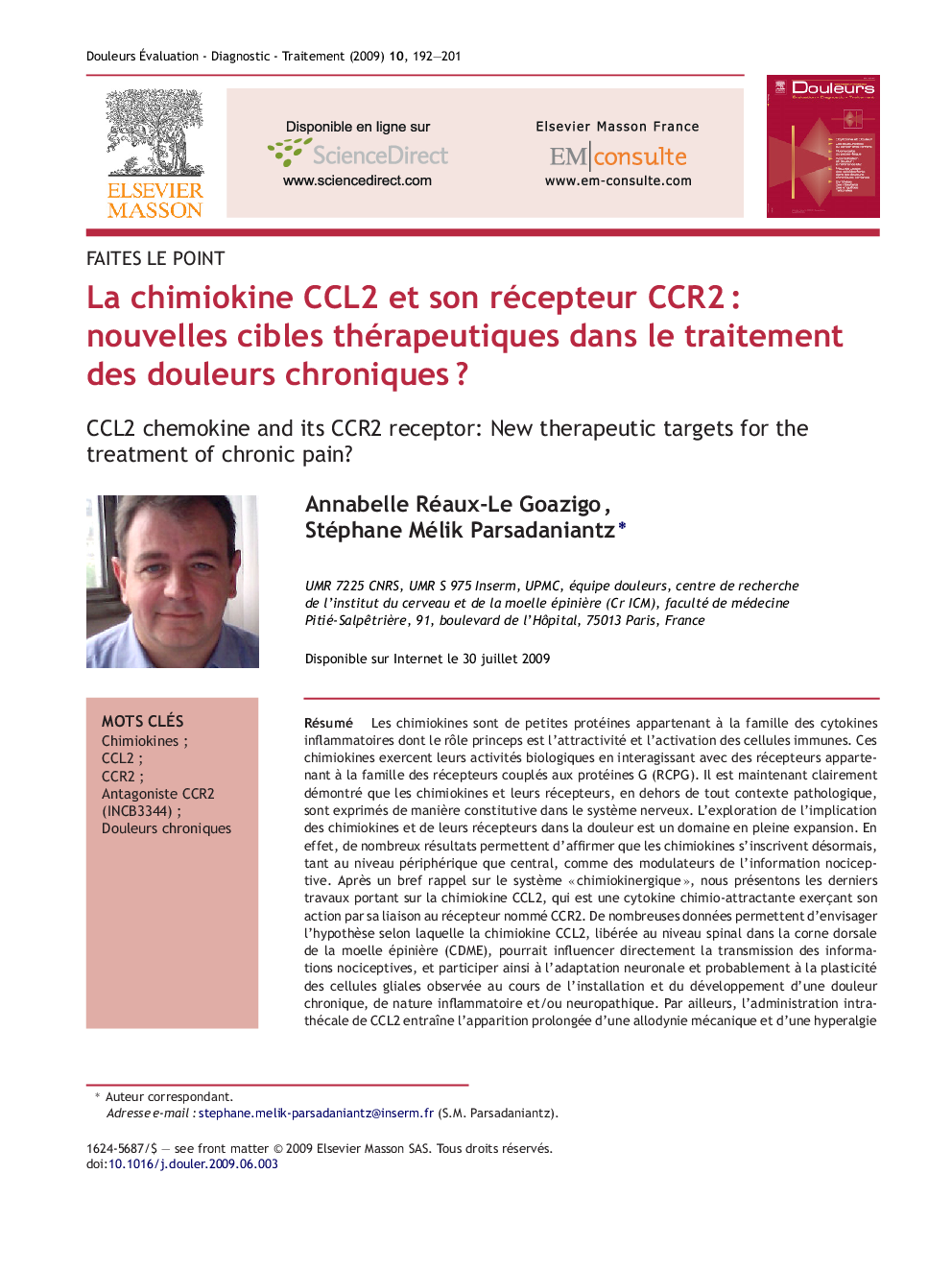| کد مقاله | کد نشریه | سال انتشار | مقاله انگلیسی | نسخه تمام متن |
|---|---|---|---|---|
| 905552 | 916940 | 2009 | 10 صفحه PDF | دانلود رایگان |
عنوان انگلیسی مقاله ISI
La chimiokine CCL2 et son récepteur CCR2 : nouvelles cibles thérapeutiques dans le traitement des douleurs chroniques ?
دانلود مقاله + سفارش ترجمه
دانلود مقاله ISI انگلیسی
رایگان برای ایرانیان
کلمات کلیدی
موضوعات مرتبط
علوم زیستی و بیوفناوری
علم عصب شناسی
عصب شناسی
پیش نمایش صفحه اول مقاله

چکیده انگلیسی
Chemokines are small proteins belonging to the family of inflammatory cytokines whose main property is to attract and activate immune cells. Chemokines produce their biological activity by interacting with receptors belonging to the family of G protein-coupled receptors (GPCR). It is now clearly demonstrated that, under non-pathological conditions, chemokines and their receptors are constitutively expressed in the nervous system. Exploration of the implication of chemokines and their receptors in pain is a rapidly expanding domain of research. Recent results demonstrate that chemokines are active as modulators of nociceptive information both in the peripheral and central nervous system. After a brief recall of the chemokinergic system, we will discuss recent work on CCL2, a chemo-attractive cytokine which binds to the CCR2 receptor. There is a large body of data supporting the hypothesis that the CCL2 chemokine, released in the dorsal horn of the spinal cord, could have a direct effect on the transmission of nociceptive information and thus participate in neuronal adaptation and probably the plasticity of glial cells observed during the installation and development of chronic pain arising from an inflammatory and/or neuropathic mechanism. In addition, intrathecal administration of CCL2 leads to prolonged mechanical allodynia and hyperalgia in response to heat hyperalgesia in the rat. CCL2 and its receptor CCR2 are over-expressed in the primary sensory neurons of the dorsal root ganglia and in the spinal neurons of neuropathic pain models. Furthermore, with spinal neurons cultured in vitro, the CCL2 chemokine can inhibit the ionic currents generated by stimulation of the GABAA receptor. Thus, in the dorsal horn of the spinal cord, CCL2 behaves like a neuromodulator inhibiting GABAergic inhibition, which could have for consequence a facilitation of nociceptive transmission. The idea of a contribution of the CCL2/CCR2 couple during nociceptive transmission associated with chronic pain is supported by the fact that CCR2 gene knock-out mice are resistant to allodynia induced by ligature of the sciatic nerve. Finally, our group has recently demonstrated that intrathecal injection of CCL2 in naive rats generates a prolonged pro-algesic effect. This effect is significantly blocked in the presence of a specific antagonist of the murine CCR2 receptor (INCB3344). These results are important because they suggest that CCR2 receptor antagonists could constitute a new class of therapeutic agents for the treatment of chronic pain.
ناشر
Database: Elsevier - ScienceDirect (ساینس دایرکت)
Journal: Douleurs : Evaluation - Diagnostic - Traitement - Volume 10, Issue 4, September 2009, Pages 192-201
Journal: Douleurs : Evaluation - Diagnostic - Traitement - Volume 10, Issue 4, September 2009, Pages 192-201
نویسندگان
Annabelle Réaux-Le Goazigo, Stéphane Mélik Parsadaniantz,